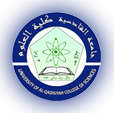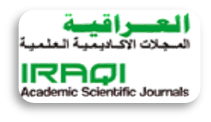Document Type
Article
Abstract
The current study have been included 250 samples diabetic foot ulcer patients attending in Al-Diwaniyah Teaching Hospital and private clinics at a period of study from beginning October 2021 to February 2022, Isolates were identified by morphological form on blood agar and macConkey agar, traditional biochemical tests and then confirmed by Vitek 2 system. The result of bacterial culture have been recorded that only 80 samples had positive result to P. mirabilis formed (32%) of this result. Prevalence of P. mirabilis isolates in male more than female (34.78%) and (28.57%) respectively, after then were determination of antibiotics susceptibility pattern of recovered isolates. The isolates showed that (100%) were resistant to penicillin G, ( 85%) Cephalexin , (75%) Cefotaxime, (100%) Ampicillin, (56.25%) Gentamycin, (35%) Amikacin,(100%) Amoxicillin / Clavulanic Acid, (58.75%) Chloramphenicol, (20%) Meropenem, (100%) Tetracycline, (22.5%) Imipenem, (83%) Streptomycin
Keywords
Proteus mirabilis, diabetes foot ulcers, VITEK2, Antibiotics
Recommended Citation
Jaber, Aseel Hussein and Almiyah, Suaad A. Fazaa
(2023)
"Antibiotic susceptibility of Proteus Mirabillis that isolates of Diabetic foot ulcers in Al- Diwaniyah Hospital,"
Al-Qadisiyah Journal of Pure Science: Vol. 28
:
No.
1
, Article 1.
Available at:
https://doi.org/10.29350/2411-3514.1000
Creative Commons License

This work is licensed under a Creative Commons Attribution-NonCommercial-No Derivative Works 4.0 International License.










